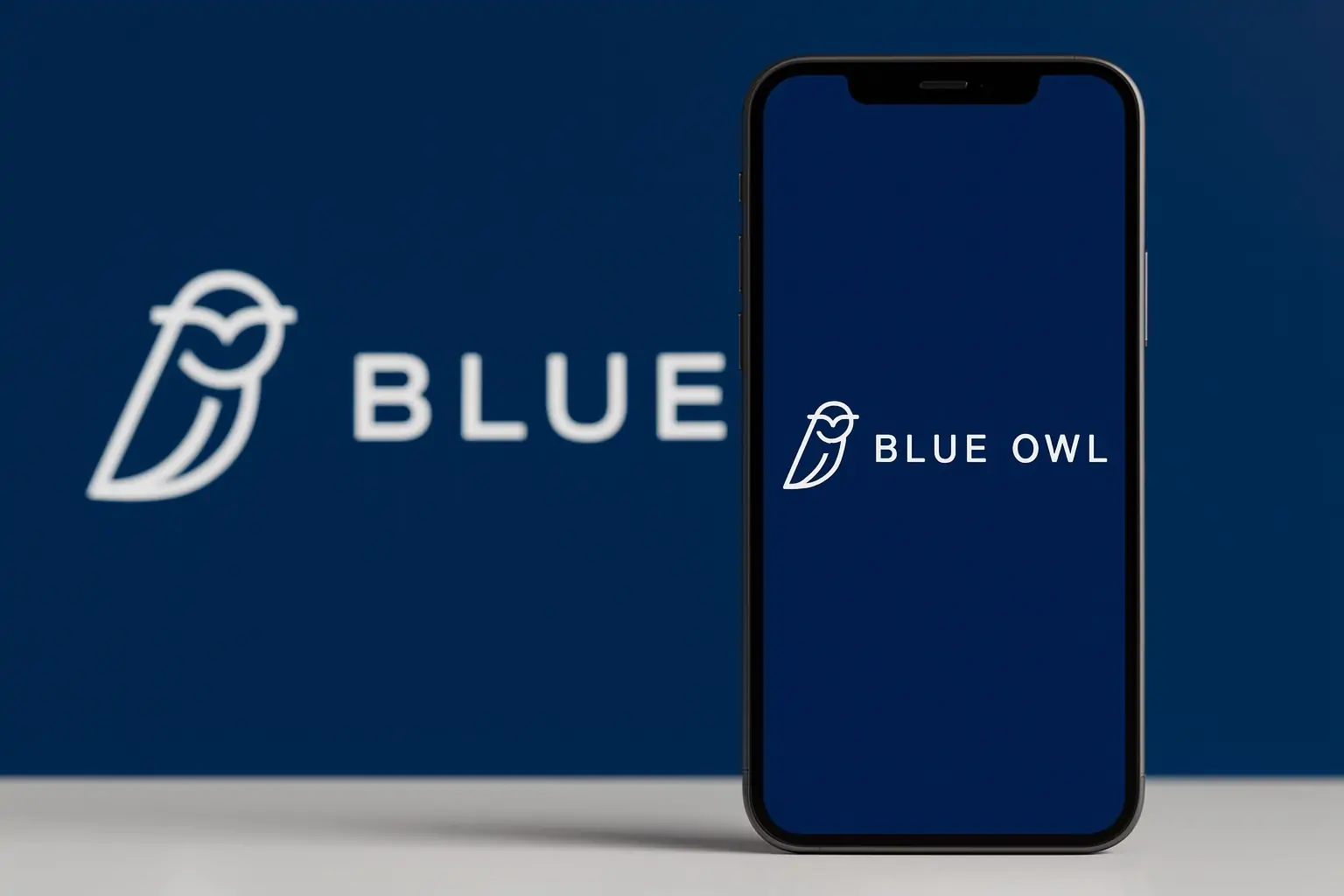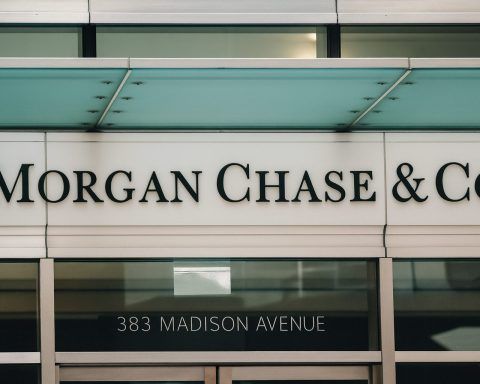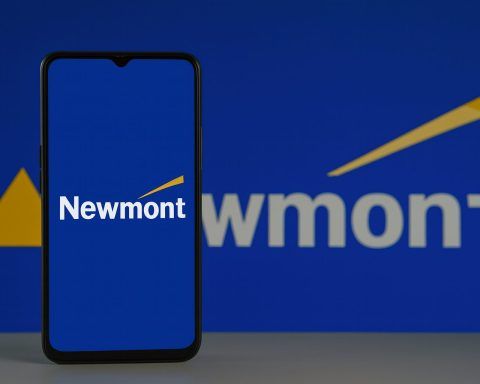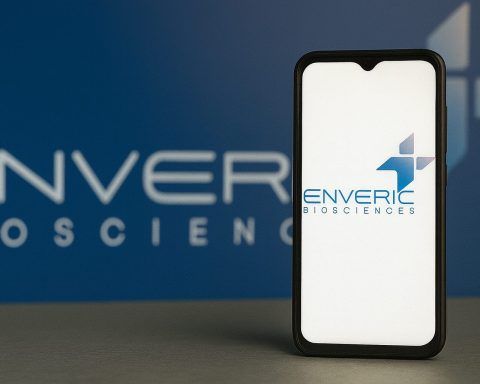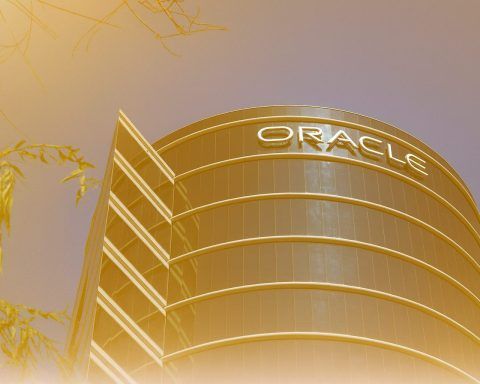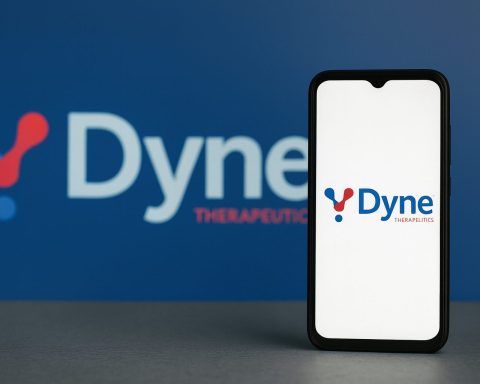Alternative asset manager Blue Owl Capital Inc. (NYSE: OWL) has pulled the plug on a controversial merger of two of its private-credit funds, capping a tumultuous week that has turned one mid‑size Wall Street firm into the poster child for growing stress in private credit.
On Wednesday, Blue Owl Capital Corporation (NYSE: OBDC) and Blue Owl Capital Corporation II (OBDC II) said they have terminated their planned merger, just weeks after announcing it, citing “current market conditions” and a desire to protect shareholders. [1]
The reversal comes after:
- A freeze on redemptions at OBDC II triggered fresh jitters across the $3 trillion private credit market. [2]
- Reports that some investors in OBDC II faced paper losses of around 20% if the deal went ahead, because they would be swapped into a listed vehicle trading far below its net asset value (NAV). [3]
- Blue Owl’s stock sliding more than 40% year‑to‑date, making it one of the worst‑performing names among publicly traded alternative asset managers. [4]
Here’s what changed today, why it matters, and what investors in OWL and OBDC need to watch next.
What Blue Owl Announced on November 19
In a joint press release this morning, OBDC and OBDC II said their boards have terminated the previously proposed merger between the two funds and will “reevaluate alternatives in the future.” Management framed the move as a response to market volatility rather than a change in conviction about the industrial logic of the deal. [5]
Key points from the company’s statement:
- Merger terminated: The combination of OBDC and OBDC II is off “for now,” despite internal analysis still suggesting it could add long‑term value. [6]
- Tender program coming back: Subject to board approval, OBDC II plans to reinstate its tender (liquidity) program in Q1 2026, giving investors a path to sell shares back to the fund at NAV. [7]
- Performance track record: Since its 2017 inception, OBDC II has delivered roughly 80% cumulative net return and about 9.3% annualised returns, with a loss rate of 23 basis points and non‑accruals under 2% of the portfolio — numbers the company is keen to highlight to counter market panic. [8]
- Buyback intact: OBDC’s previously announced $200 million share repurchase program remains in place, even though the merger has been shelved. [9]
Both BDCs are large lenders to U.S. middle‑market companies: as of September 30, OBDC held about $17.1 billion in investments across 238 portfolio companies, while OBDC II had roughly $1.7 billion across 190 companies. [10]
Separately, Reuters reported—via CNBC sourcing—that Blue Owl decided to call off the merger after the initial announcement “caused some angst among investors,” underscoring just how quickly sentiment deteriorated. [11]
The Merger That Sparked a Backlash
To understand the significance of today’s U‑turn, it helps to recap the structure that set investors on edge.
Earlier this month, Blue Owl proposed merging:
- OBDC, a publicly traded BDC whose shares change hands on the NYSE and currently trade at a steep discount to NAV; and
- OBDC II, an unlisted BDC whose shareholders can normally redeem at NAV in periodic tenders. [12]
According to Reuters Breakingviews, the two Blue Owl BDCs were already heavily overlapping: roughly 98% of OBDC II’s loans mirror those in OBDC, but the listed vehicle trades at about 0.79x NAV, while a sister listed BDC, Blue Owl Technology Finance (OTF), trades at 0.77x NAV. [13]
That gap between trading price and underlying asset value created an obvious arbitrage:
- Investors in OBDC II could redeem at NAV,
- Use the cash to buy discounted OBDC shares in the open market,
- Lock in a roughly 20% uplift simply by switching wrappers. [14]
To block that trade, Blue Owl gated redemptions at OBDC II, effectively freezing withdrawals until the merger closed—expected in early 2026. [15]
That’s where the backlash began:
- The Financial Times reported that some OBDC II investors could face a paper loss of around 20% when their holdings are converted into OBDC stock at a discount. [16]
- A Simply Wall St note on Wednesday highlighted that Blue Owl’s move to halt redemptions and “force” the merger had contributed to a 7.8% drop in OWL shares, and that investors would lose immediate liquidity until early 2026. [17]
In other words, what looked like a tidy internal consolidation exercise at Blue Owl also looked, to some individual investors, like a wealth transfer from locked‑up private fund holders to the public market—and that perception proved politically and reputationally costly.
A Flashpoint for Broader Private Credit Jitters
The Blue Owl saga isn’t unfolding in a vacuum. The firm is being buffeted by anxieties that have been building all year in private credit, a market now estimated at roughly $3 trillion and on pace to hit $5 trillion by 2029, according to Morgan Stanley. [18]
In a widely read Reuters piece on Tuesday, reporters traced how Blue Owl’s redemption freeze became a focal point for those broader worries: [19]
- High‑profile bankruptcies at borrowers like First Brands and Tricolor have spooked investors, even though many asset managers—including Blue Owl—say they had no exposure to those names. [20]
- Moody’s has warned that increasingly complex private credit structures introduce new risks around transparency, recoveries and subordination, making it harder for outsiders to see where losses might ultimately land. [21]
- JPMorgan CEO Jamie Dimon has cautioned investors that “when you see one cockroach, there are probably more,” after his bank took a charge tied to one of the troubled lenders. [22]
Adding to the noise, “bond king” Jeffrey Gundlach used a newsletter published today to argue that private credit is riddled with overpriced assets, sharpening the debate over whether this fast‑growing corner of finance is mis‑valued and under‑regulated. [23]
Within that context, Blue Owl’s initial decision to lock investors into a fund and swap them into a discounted vehicle became more than a one‑off corporate action; it became a litmus test for how private credit treats liquidity and fairness when things get bumpy.
How Strong Is Blue Owl’s Core Business?
Despite the headlines, the underlying numbers at Blue Owl are not those of a collapsing lender.
Parent company OWL
For Q3 2025, Blue Owl Capital Inc. reported: [24]
- Net revenue of about $728 million, up roughly 21% year‑on‑year.
- Fee‑related earnings (FRE) around $376 million, up nearly 15%.
- Distributable earnings of roughly $341 million, also up double‑digits.
- GAAP net income of just $6.3 million, down about 79%, thanks largely to higher expenses and non‑cash items.
At the same time, Blue Owl continues to grow aggressively in AI‑linked infrastructure, including a $30 billion data‑center partnership with Meta Platforms, one of several off‑balance‑sheet financing lines feeding the generative‑AI boom. [25]
Yet the market isn’t giving the firm much credit. Reuters notes that OWL shares are down more than 40% in 2025, significantly underperforming peers like Blackstone and Apollo. [26]
Adding pressure, JPMorgan this month cut its price target on OWL to $20 from $22, keeping a Neutral rating despite record fundraising and $57 billion of new capital commitments over the past 12 months. [27]
The BDCs: OBDC and OBDC II
For income‑focused investors, the real action is in the BDCs themselves:
- OBDC trades at about 0.79x NAV, implying a discount close to 20% to the value of its underlying loans. [28]
- Its forward dividend yield is eye‑catching: various dividend trackers put it between ~12% and 13% on current prices. [29]
- OBDC II, while smaller and unlisted, has posted near‑80% cumulative net returns since inception with a very low historical loss rate, according to Blue Owl. [30]
These numbers explain why some analysts argue the sell‑off in Blue Owl’s BDC complex looks like an overreaction, while others worry that double‑digit yields and big discounts may be signalling rising stress rather than mispricing.
Winners and Losers From the Merger’s Collapse
1. OBDC II investors: a partial reprieve
The biggest immediate winners from today’s decision are investors in OBDC II:
- They are no longer being forced into a conversion that locked in a large paper loss versus NAV. [31]
- They are expected to regain access to a tender program in Q1 2026, allowing them to redeem shares at NAV again, subject to board approval. [32]
However, it’s not a full reset:
- Until the new tender program is live, liquidity remains constrained, and some investors have already been stuck for months. [33]
- The episode may scar confidence among financial advisers and wealthy clients who thought they were in a relatively low‑volatility, income‑oriented product.
2. OBDC shareholders: discount and yield still in play
For investors in OBDC, little changes operationally:
- The $200 million buyback continues, offering some support to the share price and potentially helping to narrow the discount to NAV over time. [34]
- The ~12–13% dividend yield remains intact for now, but the market is clearly demanding a high yield as compensation for perceived liquidity and credit risk. [35]
The cancelled merger also means OBDC will not get the incremental scale and fee economics that might have come from absorbing OBDC II, at least not in this format.
3. OWL shareholders: governance and reputation risk
For holders of the parent OWL, today’s move is a mixed signal:
- On the one hand, reversing course shows the board is responsive to investor pushback rather than blindly ploughing ahead.
- On the other, the episode highlights governance and reputational risk around how Blue Owl manages conflicts between different pools of capital (listed BDCs vs. private funds) and how it handles liquidity when markets turn. [36]
In a world where regulators are already looking harder at private credit, that kind of scrutiny is unlikely to fade.
What to Watch Next
For investors following Blue Owl, OBDC, or private credit more broadly, several key questions now loom:
- How quickly does liquidity return to OBDC II?
The Q1 2026 tender program will be closely watched for its size, pricing and whether it fully satisfies pent‑up redemption demand. [37] - Does the discount at OBDC narrow—or widen?
If the combination of buybacks, a 12%+ yield and solid credit performance narrows the discount, today’s drama may eventually look like a buying opportunity. If the discount blows out further, it will validate the market’s fears. [38] - Will regulators or policymakers step in?
With U.S. prosecutors already probing alleged fraud tied to another private‑credit platform and global regulators worrying about hidden leverage, Blue Owl’s misstep may accelerate calls for tighter oversight. [39] - Can Blue Owl keep raising capital at the same pace?
The firm has been a standout fundraiser, pulling in $57 billion of new commitments over the last year, but reputational blemishes can slow inflows, especially from wealth‑management channels. [40] - How do rising AI‑infrastructure bets perform through a downturn?
Blue Owl’s large, highly structured data‑center deals tied to tech giants like Meta could be a huge long‑term winner—or a source of volatility if the AI investment cycle cools. [41]
Quick FAQ
Why did Blue Owl cancel the OBDC–OBDC II merger?
The boards cited current market conditions and shareholder interests. After weeks of criticism over locked‑in paper losses and restricted liquidity, continuing with the merger risked deeper reputational damage. [42]
Are OBDC II investors still locked in?
Yes—for now. Redemptions remain constrained until OBDC II’s tender program is reinstated in Q1 2026, subject to board approval. That should restore a mechanism for investors to exit at NAV. [43]
Is Blue Owl the “next SVB”?
Available data doesn’t support that narrative. Blue Owl’s BDCs show low historical loss rates and sub‑2% non‑accruals, and the firm has no exposure to some of the headline bankruptcies driving credit fears. The issue is more about liquidity, structure and market sentiment than immediate solvency. [44]
Is the high OBDC yield a bargain or a red flag?
A 12–13% yield and nearly 20% discount to NAV can be attractive—but they also signal that the market demands a big premium to own this risk. Whether that’s mispricing or a fair reflection of emerging credit and liquidity risk is precisely what investors are debating right now. [45]
Key Takeaways
- Blue Owl has cancelled the OBDC–OBDC II merger, bowing to investor anger over frozen redemptions and potential 20% paper losses for private‑fund holders. [46]
- The decision comes amid broader stress in private credit, where rapid growth, opaque structures and a string of credit blow‑ups have drawn warnings from rating agencies, regulators and market heavyweights like Jamie Dimon and Jeffrey Gundlach. [47]
- Blue Owl’s underlying credit metrics remain solid, and its BDCs generate double‑digit yields, but the firm’s share price is down over 40% year‑to‑date, reflecting heightened fear around liquidity and governance. [48]
- For now, OBDC II investors get a reprieve from a forced conversion, while OBDC shareholders retain a hefty yield and buyback support—but both groups are still tethered to a market that is rapidly reassessing how much risk lurks inside private credit structures. [49]
This article is for informational purposes only and does not constitute financial advice, investment recommendation or an offer to buy or sell any security. Always do your own research or consult a licensed financial adviser before making investment decisions.
References
1. www.prnewswire.com, 2. www.reuters.com, 3. www.ft.com, 4. www.reuters.com, 5. www.prnewswire.com, 6. www.prnewswire.com, 7. www.prnewswire.com, 8. www.prnewswire.com, 9. www.prnewswire.com, 10. www.prnewswire.com, 11. www.marketscreener.com, 12. www.reuters.com, 13. www.reuters.com, 14. www.reuters.com, 15. www.reuters.com, 16. www.ft.com, 17. simplywall.st, 18. www.reuters.com, 19. www.reuters.com, 20. www.reuters.com, 21. www.reuters.com, 22. www.reuters.com, 23. www.bloomberg.com, 24. www.insidermonkey.com, 25. www.reuters.com, 26. www.reuters.com, 27. finviz.com, 28. www.reuters.com, 29. www.digrin.com, 30. www.prnewswire.com, 31. www.ft.com, 32. www.prnewswire.com, 33. www.reuters.com, 34. www.prnewswire.com, 35. www.digrin.com, 36. www.reuters.com, 37. www.prnewswire.com, 38. www.digrin.com, 39. www.reuters.com, 40. www.insidermonkey.com, 41. www.reuters.com, 42. www.prnewswire.com, 43. www.prnewswire.com, 44. www.prnewswire.com, 45. www.digrin.com, 46. www.prnewswire.com, 47. www.reuters.com, 48. www.reuters.com, 49. www.prnewswire.com
